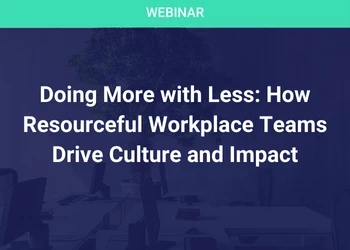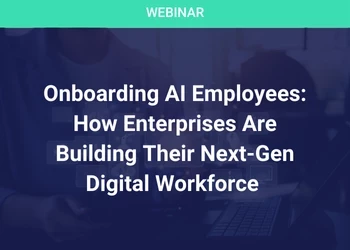
For years there has been a concern regarding remote work. Management worried about quality, production, and the fact that people could not perform their job without direct supervision, such as cheating the company out of focused work during assigned hours. 'Out of sight' was often seen as a disconnect with company goals, vision, and expectations.
Fast forward to the pandemic period, and businesses were forced to embrace remote workers to keep work flowing and profits maintained. Like a science experiment, everyone watched as things progressed, including adopting products to offer a way to recreate the water cooler atmosphere, with people sharing and chatting throughout the day. Like all pilot programs, necessity created a primarily successful outcome. Companies discovered the ability to recreate three key areas - innovation, productivity, and culture, without everyone in the same room.
Now, as we move into the post-pandemic era, it has been noted by many companies that the ability to work from home is no longer an option. Companies are stating concerns about culture, quality, and support. While they say this, no one has stepped forward and shown the validity of these statements. So why is it so important we return to the office?
Google recently announced the requirement for a hybrid schedule to reconnect workers to the Google community. And now they're pushing harder for a return to the office. So how is it that one of the largest tech companies managed to assist a global community in becoming more proficient at being remote but not 'practice what they proposed,' demonstrating the leadership role they were encouraging other companies to adopt?
It is not to fault Google for wanting its workforce to benefit from being on its campus, wanting a workforce that produced and developed as it did before the pandemic. It's the fact that they, like many other companies, are making decisions based on reactive rather than proactive decision-making. And they're not alone; many companies are struggling with the same issue.
So how do we help companies understand what is wanted, needed, and likely to be the difference between a mediocre and an excellent workforce? Here are seven key considerations:
1. Policy needs to benefit both the company and the employees. We all know that it's the company first to keep the fires burning; however, it is essential to understand your workforce needs to have the retention and support required.
2. Justification takes research, data, and transparency. Remember when you were a child and an adult said, 'Because I said so?' Nothing made us feel anger or irritation, right? However, when someone explained the purpose of the decision, while we didn't always like it, we at least understood it. And we reset our mindset and moved forward. So why are companies using the term 'or else' or soft-threatening with how it will affect your 'performance reviews'? These threats are falling upon deaf ears in the Gen Z segment, those who are leaving roles in record numbers rather than have to return to the office. And most recently, Google has announced it's looking at using return to office as part of employee performance, creating more mistrust and coercion rather than identifying how to create a new, more inclusive solution.
3. The future requires moving in a forward direction. As we use the phrase 'return to normal,' the reality is there is always the possibility that another crisis is a moment away. So for those who aren't embracing the changes made during the pandemic, will they once again have to start over? Will businesses survive another significant disruption? Or will they have to return to hybrid or remote work once enough talented employees leave?
4. AI isn't the holy grail. While we all agree the entrance of AI with products such as ChatGPT is helpful, replacing everyone with this type of product is not an option. Unlike the movies, AI isn't to that capacity yet. Like a small child, it is still growing and learning but lacks the maturity to fully function in how it should respond. It also lacks the humanistic side. Employees adjust their work based on understanding the preferences and expectations of a direct supervisor and the overall company. The ability to navigate working with and for people is much different than what AI can identify in its current stage.
5. Know who is in your workforce. Recognizing the different types of workers and creating inclusion for their expectations, reasoning, and what made a work-life balance that supported employees would help businesses navigate the transition.
- Gen Z (18-26 years): Currently populates 30% of the workforce and will continue to move into jobs of tomorrow as records show 10K baby boomers are retiring daily. Here is what they want.
- Millennials (27-42 years): The latest statistics note that 75% of the workforce will be millennials by 2025, indicating a significant shift in the workforce. Now, more than ever, it will be important to embrace this change and be prepared for how you will train, develop, and retain this vital group of workers.
- Don't forget Gen X (43-58 years): These people have managed life in two segments, a paper-pushing world for the first half of their lives and full technology adoption in the last decade. While their skill levels may vary, they serve as the vault of historical data.
- Baby Boomer & Silent Generation (59-95): The individuals who have served as the foundation of our workforce are retiring in record numbers, continuing to expose gaps in organizational charts and a lack of preparation to fill those positions.
6. Innovation should be at its best for internal and external clients. Diversity and inclusion suddenly have the opportunity to provide a level playing field to all members, bring everyone into the group, and share equally.
7. Health meter your company. Paul Graham stated, "Remote work does work initially if you start with a system already healthy from in-person work." He shares that some companies can handle remote work, while others may not have that ability. Either way, those already in top performance can re-align and benefit from the model. Knowing your workforce is essential to make informed decisions and balancing what will work best for all involved. Paul Graham says remote work 'does work initially,' which is why it 'fooled' leaders who have since 'changed their minds.'
Rather than returning to 'normal,' we must seek to create a new measurement of how the world will work and thrive daily. Understanding and learning from our recent pilot experience and identifying future needs is essential. Companies that proactively assess and determine how to move forward may worry less about the 'new normal' and more about setting the next wave of workforce policies.





























